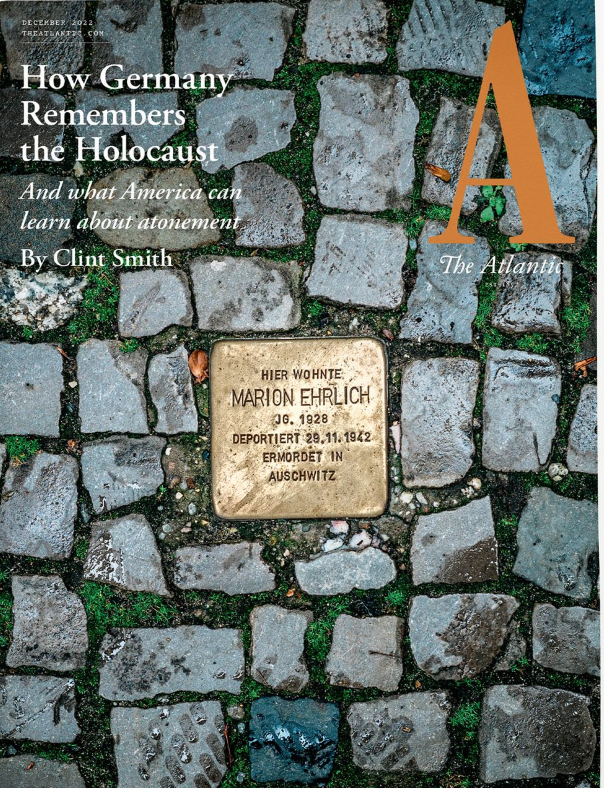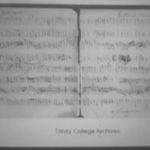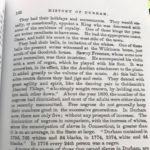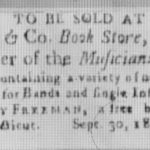What America Can Learn About Atonement

We are honored to have our work recognized by Clint Smith.
Some in the U.S. have undertaken efforts reminiscent of those in Germany. In Connecticut, a group of educators started the Witness Stones Project, modeled after the Stolpersteine in Germany. The group works with schoolchildren in five Northeast states to help them more intimately understand the history of slavery in their town….
None of these projects, whether in the U.S. or Germany, can ever be commensurate with the history they are tasked with remembering. It is impossible for any memorial to slavery to capture its full horror, or for any memorial to the Holocaust to express the full humanity of the victims. No stone in the ground can make up for a life. No museum can bring back millions of people. It cannot be done, and yet we must try to honor those lives, and to account for this history, as best we can. It is the very act of attempting to remember that becomes the most powerful memorial of all.
We invite you to read the full article here.
The Witness Stones Dedication in Essex, Connecticut
They also honored Sawney Freeman, a Black musician who, after gaining his freedom, moved to Essex, where he lived with his family. During the ceremony, a quartet (three strings and a flute) performed 13 pieces composed by Freeman. The sheet music had been discovered in an archive at Trinity College by members of the coalition. St. John’s Episcopal Church in Essex invited their musical director, Anthony Pandolfe, to adapt the music for the quartet, who played selected pieces throughout the ceremony. Some of the titles included: Liberty March, Solemnity, Adam’s March, The Rays of Liberty, Washington’s Farewell, Pleasures of Solitude, Mount Vernon, and The Union of All Parties.
During the program, Stacie Paudelli, a church member, presented research about Sawney Freeman. Among her findings were:
- Details about his enslavement and emancipation in Lyme
- His early life as a free man, first in East Haddam and then Saybrook (now Essex)
- An IOU signed by two Lyme residents, with Sawney Freeman being promised payment
- Records of his family’s life in Essex, including receipts for shoes and payment for work
- A notice for the sale of a book of Sawney Freeman music at Isac Beers and Co., a New Haven
bookstore - An image of his sheet music, presumably in Sawney Freeman’s own hand
- An excerpt from William Chauncey Fowler’s History of Durham, describing the ebullient
dancing when the well-known musician Sawney Freeman played the fiddle and foot organ at
a celebration for Caesar, Durham’s “slave King” - Sawney’s burial, with his wife, Clarissa, and son, James, in Riverview Cemetery in Essex





